1773 Sampler
Certainly I cannot claim to be an expert on samplers, nor on how one would work a sampler if one was a particularly outstanding embroiderer. I find counted work VERY difficult and make mistakes so often that it's an exercise in frustration rather than joy.When I received the 1775 sampler and took it out of the frame to re-mount, I saw the back and thought to myself "Yep, that's exactly how I would have done this - running a thread all across the back with no regard whatsoever to neatness."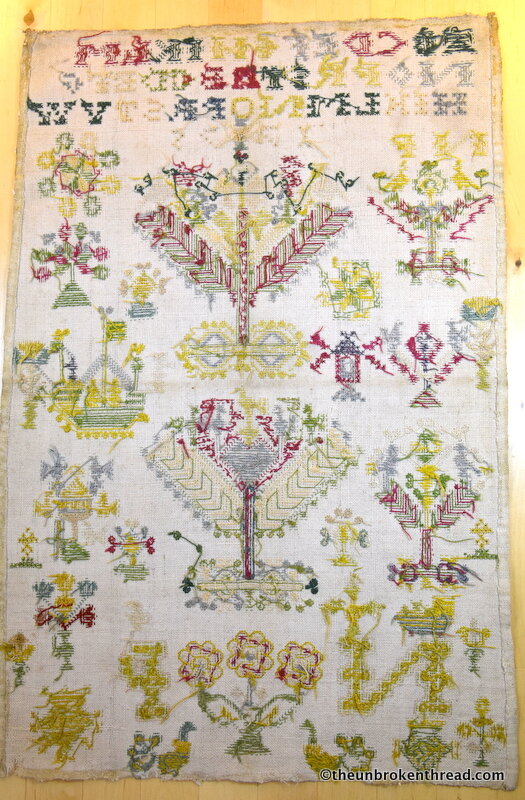 However, whoever embroidered my newest old sampler from 1773, was very tidy indeed. In fact, she was so tidy that the back looks exactly like the front, but in reverse. But before I go into that, a little bit about the sampler. I purchased it from an auction house in Paulen, Germany. As you can see below, it is a beautiful combination of decorative border work at the top, various alphabets in the middle and figures and a building at the bottom.
However, whoever embroidered my newest old sampler from 1773, was very tidy indeed. In fact, she was so tidy that the back looks exactly like the front, but in reverse. But before I go into that, a little bit about the sampler. I purchased it from an auction house in Paulen, Germany. As you can see below, it is a beautiful combination of decorative border work at the top, various alphabets in the middle and figures and a building at the bottom.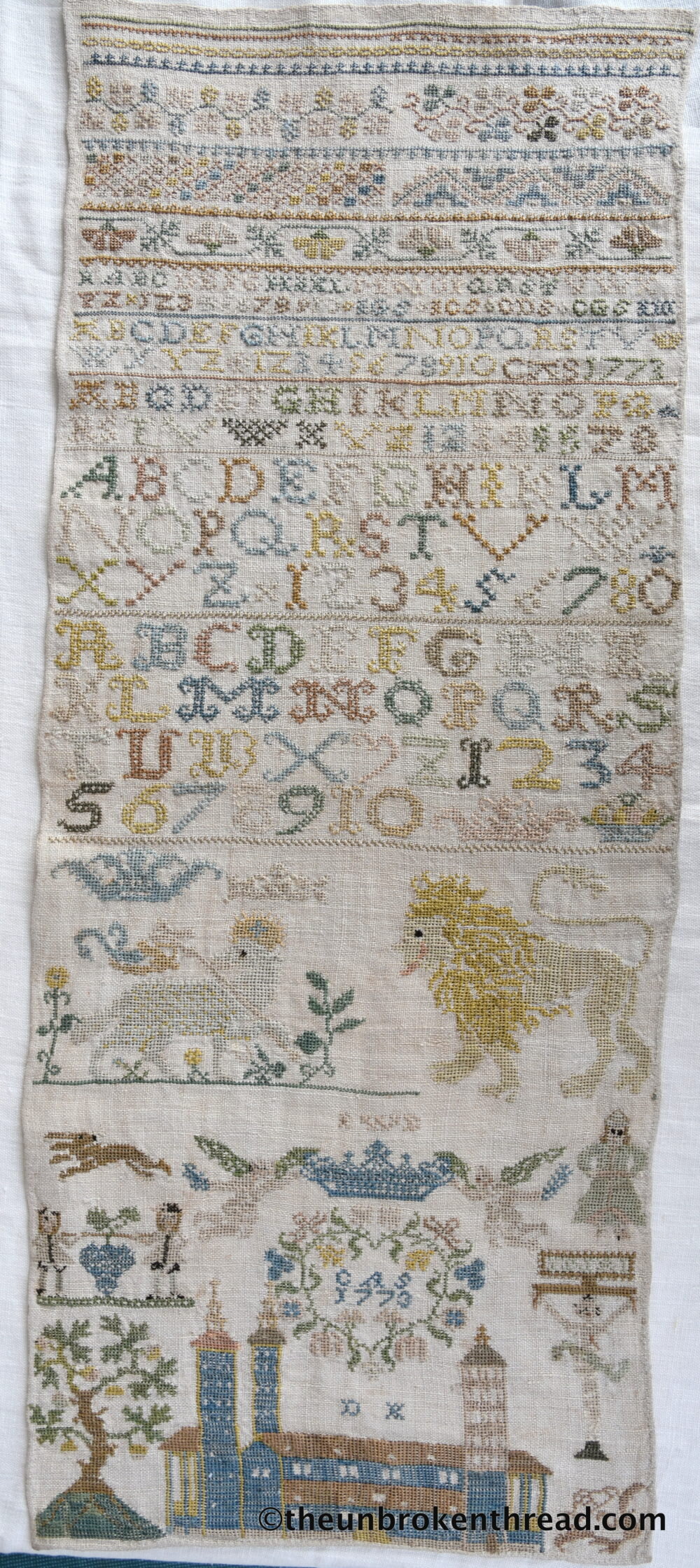 The first thing I tried to find out was what building is embroidered on the sampler. This might give me a clue as to where the sampler was made.At first I thought is was the cathedral in Münster or perhaps the cathedral in Worms. Neither of them had the towers in the right places. Then I found photos of the Kloster Großcomburg near Schwäbisch Hall in Baden-Württemberg in Germany.
The first thing I tried to find out was what building is embroidered on the sampler. This might give me a clue as to where the sampler was made.At first I thought is was the cathedral in Münster or perhaps the cathedral in Worms. Neither of them had the towers in the right places. Then I found photos of the Kloster Großcomburg near Schwäbisch Hall in Baden-Württemberg in Germany.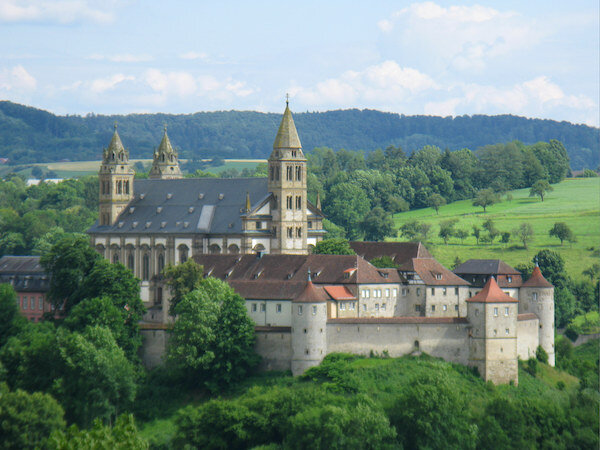 It was founded in the late 1070s by the Counts of Comburg-Rothenburg on the site of their castle. The Stiftskirche St. Nikolaus appears to be the building that's embroidered on the sampler. What makes it even more interesting is that, according to their website for tourists, from the front of the Stiftskirche St. Nikolaus visitors can look across to Kleincomburg Convent, on the crest of the hill.
It was founded in the late 1070s by the Counts of Comburg-Rothenburg on the site of their castle. The Stiftskirche St. Nikolaus appears to be the building that's embroidered on the sampler. What makes it even more interesting is that, according to their website for tourists, from the front of the Stiftskirche St. Nikolaus visitors can look across to Kleincomburg Convent, on the crest of the hill.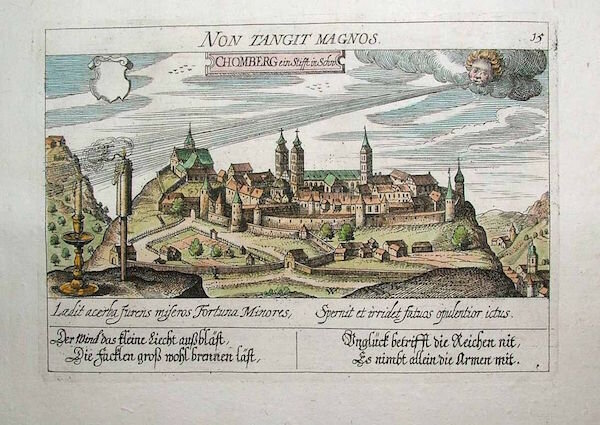 it was founded in 1108, it served as a priory for Großcomburg Monastery. Do you suppose it could possibly be that a member of the convent - perhaps a young girl who went there for schooling - embroidered this sampler? That certainly would explain the religious designs on the sampler such as the lion and lamb and the crucifix.
it was founded in 1108, it served as a priory for Großcomburg Monastery. Do you suppose it could possibly be that a member of the convent - perhaps a young girl who went there for schooling - embroidered this sampler? That certainly would explain the religious designs on the sampler such as the lion and lamb and the crucifix. All the history aside (which is really my favorite part of collecting samplers!), what amazed me when I took the sampler out of the frame is that the back is exactly the same as the front. Above is a photo of part of the front of the sampler and below is a photo of the same section from the back side.
All the history aside (which is really my favorite part of collecting samplers!), what amazed me when I took the sampler out of the frame is that the back is exactly the same as the front. Above is a photo of part of the front of the sampler and below is a photo of the same section from the back side.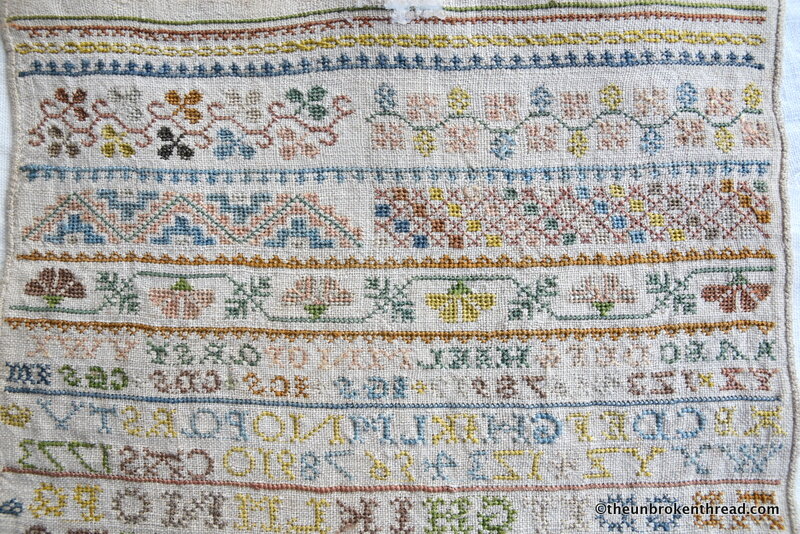 I looked with my magnifying lamp everywhere for a single thread that was carried across the back and I could not find one. Not one! Turning it over, I also could see that the colours had barely faded since 1773. This tells me it was kept somewhere very safe and treasured by the embroiderer's family or friends for the last 243 years.
I looked with my magnifying lamp everywhere for a single thread that was carried across the back and I could not find one. Not one! Turning it over, I also could see that the colours had barely faded since 1773. This tells me it was kept somewhere very safe and treasured by the embroiderer's family or friends for the last 243 years.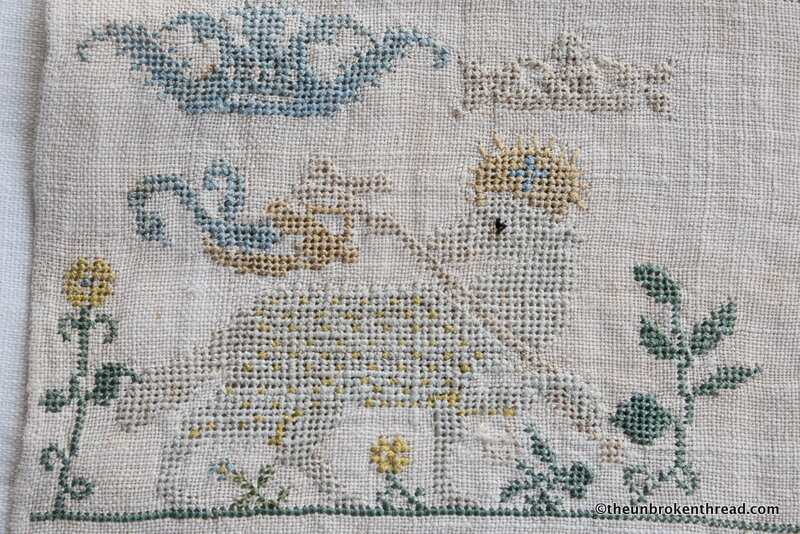 The lamb has been embroidered using a pale grey/white thread and touches of light yellow were added to help give the impression of the curly wool.
The lamb has been embroidered using a pale grey/white thread and touches of light yellow were added to help give the impression of the curly wool.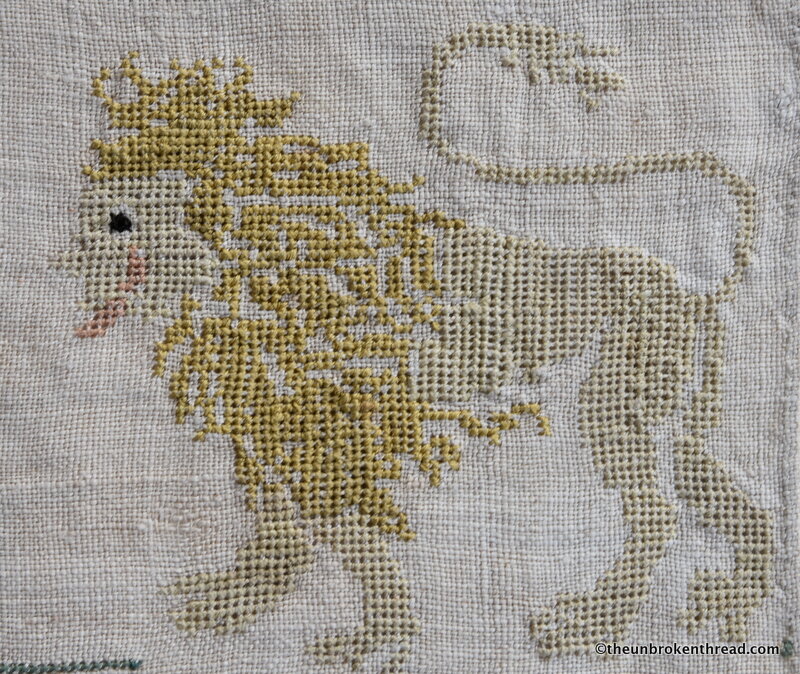 The lion is hilarious! Obviously the embroiderer had either seen (unlikely I would imagine) or had a very good image of a lion, but she also decided he shouldn't be frightening! His tongue is hanging out and he appears to be grinning! The mane is especially beautiful!
The lion is hilarious! Obviously the embroiderer had either seen (unlikely I would imagine) or had a very good image of a lion, but she also decided he shouldn't be frightening! His tongue is hanging out and he appears to be grinning! The mane is especially beautiful!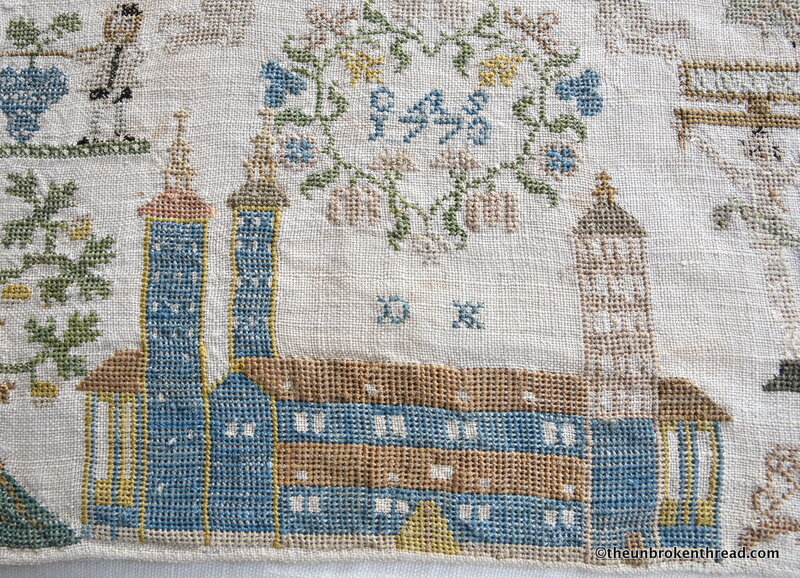 And then there's the building. I really hope I'm correct and that is really is supposed to be the Stiftskirche St. Nikolaus. There's a bit of building on the right that isn't in the photos I found online. However, building do undergo change, both additions and demolitions, and that could explain the difference. She's taken great care to depict the windows in the towers and the windows in the main building. I didn't find any other buildings with three towers - two at one end and one at the other, during my online search. To be really sure I would need to find and ask a European architectural historian.Or I could go there and ask!Watch this space...
And then there's the building. I really hope I'm correct and that is really is supposed to be the Stiftskirche St. Nikolaus. There's a bit of building on the right that isn't in the photos I found online. However, building do undergo change, both additions and demolitions, and that could explain the difference. She's taken great care to depict the windows in the towers and the windows in the main building. I didn't find any other buildings with three towers - two at one end and one at the other, during my online search. To be really sure I would need to find and ask a European architectural historian.Or I could go there and ask!Watch this space...
